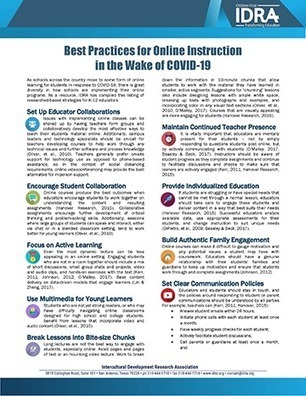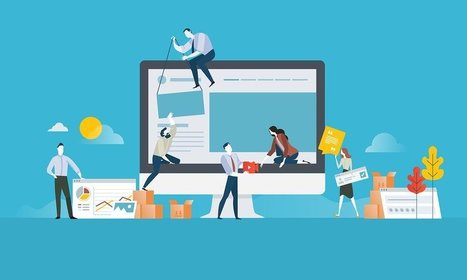As schools across the country move to some form of online learning for students in response to COVID-19, there is great diversity in how schools are implementing their online programs. As a resource, IDRA has compiled this listing of researched-based strategies for K-12 educators.
Get Started for FREE
Sign up with Facebook Sign up with X
I don't have a Facebook or a X account

 Your new post is loading... Your new post is loading...
 Your new post is loading... Your new post is loading...
Current selected tags: 'best practice', 'how to guides'. Clear
The 2020 list of EDUCAUSE’s Top 10 IT Issues provides evidence that the higher education IT community is increasingly focused on using technology to better understand students and rethink systems, culture and process to improve student success. This focus is especially critical when it comes to using student data to improve retention and completion rates. To develop the capabilities and systems that can provide students with personalized, timely support, institutions need to understand how data technology, such as predictive analytics, can address the factors that lead to student success. They also must know how to use information from institutional data to introduce changes that promote sustainable, effective and efficient practices, while considering students’ experiences and needs as their starting point.
Attention all teachers—veteran teachers especially. You have much of value to offer your students. You probably also have much of value to offer the teachers at your school. But what if you’re one of those teachers who also have much of value to offer the world of education at large?
The quality of service provided to the public by library and information science institutions depends on the expertise of their staff. Constant flux in the needs of societies, changing technologies, and growth in professional knowledge demand that information workers must expand their understanding and update their skills on an ongoing basis. As stated in the IFLA/UNESCO Public Library Manifesto 1994: |
Dr. Rhianna Rogers is an associate professor of interdisciplinary studies at SUNY Empire State College. Part of her work has led her to specialize in remote and online learning in higher education. Dr. Rogers has led numerous remote residency programs, online learning initiatives, and collaborative online international learning (COIL) functions, among other efforts.
Elizabeth E Charles's insight:
Great source of readings on online learning.
"So, you’re interested in developing a microlearning lesson. Are there any microlearning best practices you can use? Of course there are; let’s take a look." Via EDTECH@UTRGV
You’ll never have a second chance to make that first impression – which is why your website’s design is undoubtedly one of the most critical things you should pay attention to.
To do that, we believe it’s imperative to build best-practice processes of assessment across an entire institution that enable: 1) faculty to have the support and tools needed to more effectively communicate feedback on performance to students; 2) students to have the support and tools needed to more deeply engage in a reflective learning process; and 3) administrators to better collect and measure data on teaching and learning with the purpose of using that data to improve student learning. |
















